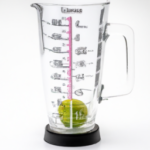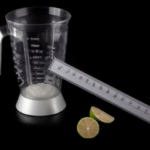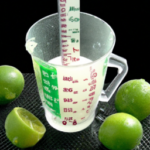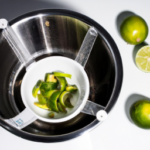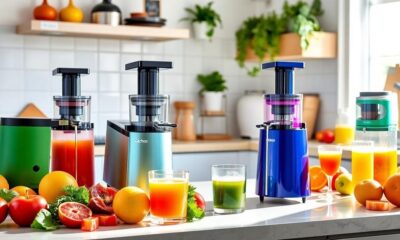Juice Tips and Tricks
How Much Lime Juice Per Lime
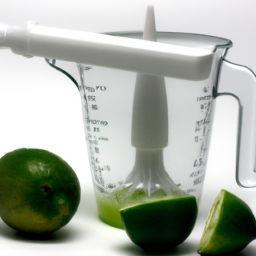
As someone who loves trying new flavors in cooking, I frequently wonder, “How much lime juice can I get from one lime?” This question can be tricky to answer because limes come in different sizes and levels of ripeness, and recipes call for different amounts of juice.
But fear not, because I’ve done the research and experimentation so you don’t have to. In this article, I’ll break down everything you need to know about getting the most juice out of your limes, including the standard measurement, techniques for juicing, and tips for maximizing your yield.
First things first, let’s talk about lime size and ripeness. When it comes to juicing limes, you want to look for fruits that are plump, firm, and heavy for their size. Avoid limes that are overly soft or have brown spots, as these are signs of over-ripeness or decay. Keep in mind that limes can vary in size from small key limes to larger Persian limes, so adjust your measurements accordingly.
As a general rule of thumb, one lime will yield about 1-2 tablespoons of juice, but this can vary based on size and ripeness.
Now, let’s get into the nitty-gritty of juicing those limes.
Key Takeaways
- One lime yields 1-2 tablespoons of juice; ripe limes yield more juice
- Lime juice measurement: standard measurement is 1 tablespoon; 1 oz in cocktails
- Microwaving limes for 10-15 seconds before squeezing can soften fruit and increase juice yield
- Lime juice substitutes: lemon juice or vinegar/citric acid-based substitutes can be used.
Understanding Lime Size and Ripeness
You’ll want to choose limes that are bright green and feel heavy for their size to ensure the juiciest squeeze possible. Lime varieties come in different sizes, but the standard Persian lime is the most commonly used in recipes. However, you may also come across the smaller key lime or the larger Bearss lime.
It’s important to select limes that are ripe but not overripe. Overripe limes will be yellow and soft, and they won’t produce as much juice as green, firm limes. If you’re unable to find fresh limes, lime juice alternatives such as bottled lime juice or frozen lime juice concentrate can be used as a substitute, but fresh lime juice will always provide the best flavor.
When it comes to measuring lime juice, the standard lime juice measurement is typically 1 tablespoon. However, this can vary depending on the size and juiciness of the lime. Some limes may yield more than 1 tablespoon of juice, while others may yield less. It’s important to keep this in mind when following recipes that call for lime juice. You may need to adjust the amount of lime juice you use to achieve the desired flavor.
The Standard Lime Juice Measurement
When making cocktails, it’s important to know that the standard measurement for lime juice is about one ounce. This measurement is based on the typical size and juiciness of a lime. However, it’s important to note that lime juice alternatives, such as bottled lime juice or a combination of lemon and lime juice, can also be used in cocktails.
To better understand the standard measurement of lime juice, here’s a table comparing the average amount of juice per lime to the standard measurement of one ounce:
| Lime Size | Juice per Lime | Standard Measurement |
|---|---|---|
| Small | 1/2 ounce | 2 limes |
| Medium | 3/4 ounce | 1 1/3 limes |
| Large | 1 ounce | 1 lime |
Using a citrus juicer can make it easier to extract the maximum amount of juice from a lime.
Using a Citrus Juicer
To get the most out of your cocktail’s citrus flavor, try using a citrus juicer – it’ll make all the difference in the world! Citrus juicers come in different types and sizes, but they all work by extracting the juice from the fruit without the bitter pith.
Here are some advantages of using a citrus juicer:
-
Consistent results every time: A citrus juicer ensures that you get the same amount of juice from each lime, allowing you to measure the exact amount of lime juice needed for your recipe.
-
Time-saving: Using a citrus juicer is a quick and efficient way to extract the juice from your limes, especially when compared to hand-squeezing each lime.
-
Less mess: A citrus juicer catches the juice in a container, eliminating the need for a separate bowl to catch the juice and reducing the mess on your countertops.
-
Citrus juicer alternatives: If you don’t have a citrus juicer, you can use a hand-held juicer or an electric juicer as an alternative.
Choosing the right lime for juicing is also important. Ripe limes that are firm and heavy will yield more juice than unripe or overripe limes.
With a citrus juicer and the right limes, you’ll have perfectly extracted lime juice for your cocktails.
Moving forward, let’s talk about hand-squeezing limes and how to get the most juice out of them.
Hand-Squeezing Limes
When it comes to hand-squeezing limes, there are a few things I like to keep in mind. First and foremost, preparing the lime properly is crucial. I like to roll it on the counter with a little bit of pressure to help break down the fibers inside.
Additionally, there are different techniques for hand-squeezing that can help maximize the amount of juice extracted. By using a combination of these techniques and proper preparation, you can ensure you’re getting the most out of your limes.
Preparing Limes for Squeezing
First things first, before you start squeezing, cut your limes in half crosswise. This will make it much easier to extract the juice. When selecting your limes, keep in mind that different lime varieties may require different amounts of pressure to extract the juice. Key limes, for example, are smaller and more delicate than regular limes and may require a gentler hand.
To prepare your limes for squeezing, follow these steps:
-
Roll the lime on a hard surface before cutting it in half to help loosen the juice.
-
Use a sharp knife to cut the lime in half crosswise.
-
If your lime is particularly tough, use a citrus reamer or juicer to help extract the juice.
-
Finally, use your hands or a juice strainer to remove any seeds or pulp from the juice.
Once your limes are properly prepared, you can move on to the next step: hand-squeezing.
Techniques for Hand-Squeezing
Get ready to perfect your hand-squeezing technique by following these simple steps. First, make sure your hands are strong enough to squeeze the juice out of the lime. If you have weak hands, you may want to consider using juicing accessories such as a citrus press or a reamer. These tools can help you get the most juice out of your limes without straining your hands.
Once you are ready to hand-squeeze, follow these steps: Cut the lime in half crosswise, not lengthwise. Hold one half of the lime in your non-dominant hand with the cut side facing down. Place your dominant hand over the lime and squeeze firmly, using your fingers and palm to apply pressure. Rotate the lime and squeeze again until you have extracted all the juice. Repeat with the other half of the lime. By using this technique, you can maximize your lime juice output and ensure that you get the most flavor out of each fruit.
To further maximize your lime juice yield, we will discuss the amount of lime juice per lime in the next section.
Maximizing Your Lime Juice Yield
To get the most juice out of your limes, you’ll want to roll them on a hard surface before cutting them open – this will help break down the membranes and release more juice. Additionally, you can try microwaving your limes for 10-15 seconds before squeezing them. This will help soften the fruit and allow for more juice to be extracted.
A general rule of thumb is that one lime will yield about 1-2 tablespoons of juice. However, it’s always best to measure the juice to ensure accuracy in your recipes. And if you find yourself without any limes, you can try using lemon juice or even a lime juice substitute made from vinegar or citric acid. When substituting, keep in mind that lemons tend to be slightly less tart than limes, so you may need to adjust the quantity to suit your taste. If you’re wondering how much lemon juice per lemon, the average lemon will provide about 2-3 tablespoons of juice, depending on its size and ripeness. As with limes, it’s always a good idea to measure the juice rather than relying on estimates to ensure the right balance of flavors in your dish.
When it comes to storing lime juice, it’s important to keep it refrigerated in an airtight container to prevent oxidation and maintain its freshness.
Storing Lime Juice
Now that I’ve maximized my lime juice yield, I need to figure out how to store it properly.
One of the key questions on my mind is how long lime juice lasts.
I also want to explore tips for freezing and thawing lime juice, so I can make the most of my lime supply.
How Long Does Lime Juice Last?
Lime juice can be stored in the refrigerator for up to a week, but it’s best to use it within three to four days for optimal freshness. If you’re unsure whether your lime juice has gone bad, there are a few ways to tell. First, check for any changes in color or texture. If the juice has become cloudy or has small particles floating in it, it may have started to spoil. Additionally, if the juice smells sour or has an off-putting odor, it’s likely that it’s no longer good to use.
To extend the shelf life of your lime juice, there are a few things you can do. First, make sure to store it in an airtight container to prevent any bacteria from getting in. Additionally, adding a small amount of sugar or salt to the juice can help preserve it for a longer period of time. Finally, freezing the juice can also extend its shelf life, which we’ll discuss in the next section.
Tips for freezing and thawing lime juice are important for those who want to use lime juice beyond its typical shelf life.
Tips for Freezing and Thawing Lime Juice
Freezing lime juice can extend its shelf life significantly, with one interesting fact being that it can last up to 6 months in the freezer. Here are some tips for freezing and thawing lime juice:
-
Use an airtight container to store the lime juice in the freezer. This will prevent freezer burn and keep the juice fresh for longer.
-
Fill the container only three-quarters full to allow space for the juice to expand as it freezes.
-
Label the container with the date the juice was frozen so you can keep track of how long it has been in the freezer.
When it comes to thawing lime juice, there are a few methods you can use. The easiest way is to simply leave the container in the refrigerator overnight. Alternatively, you can place the container in a bowl of warm water to speed up the process. Avoid using a microwave to thaw the juice, as this can cause the juice to lose its flavor and nutritional value.
With these freezing and thawing techniques, you can have fresh lime juice on hand for up to 6 months!
Experimenting with lime juice can be a fun and tasty way to add some zing to your meals. But before you start mixing and matching, it’s important to know how much lime juice to use per lime.
Experimenting with Lime Juice
I’ve been experimenting with lime juice in my cooking lately and I’ve found some unique and creative recipes to try. Combining lime juice with other flavors has been a fun way to create new dishes and add some brightness to old favorites.
From lime-infused guacamole to lime-marinated shrimp skewers, the possibilities are endless.
Unique and Creative Recipes to Try
If you’re looking to spice up your meals, why not try out some unique and creative recipes that are sure to impress your taste buds? Lime juice can be used in a variety of ways to add a burst of flavor to your dishes. From sweet to savory, there are countless creative uses for lime juice that you may not have considered before.
One creative use for lime juice is in flavor pairings. Lime juice pairs well with a variety of flavors, including cilantro, garlic, and ginger. Try mixing lime juice with these ingredients to create a zesty marinade for chicken or shrimp.
You can also add lime juice to salsa or guacamole for a tangy twist. For a sweet treat, combine lime juice with honey or agave nectar to make a refreshing limeade or cocktail. The possibilities are endless! So, why not experiment with lime juice and see what delicious creations you can come up with?
When it comes to combining lime juice with other flavors, there are a few things to keep in mind. Certain flavors can overpower the taste of lime juice, so it’s important to find the right balance. For example, if you’re adding lime juice to a dish that already has a strong acidic component, such as tomatoes or vinegar, you may want to use less lime juice to avoid overwhelming the dish.
However, if you’re combining lime juice with milder ingredients like avocado or coconut, you can use a bit more lime juice to enhance the flavor. Keep experimenting and trying new combinations until you find the perfect balance of flavors.
Combining Lime Juice with Other Flavors
Mixing lime juice with other flavors is like creating a symphony of tastes that harmoniously blend together. The tangy and zesty flavor of lime complements sweet and savory dishes, enhancing their taste and aroma.
Here are three ways to incorporate lime juice in your dishes:
-
Balancing lime with sweet flavors: Lime juice adds a refreshing twist to sweet treats, such as key lime pie or lemon bars. Its acidity balances the sweetness of the dessert, creating a perfect harmony of flavors.
-
Incorporating lime juice in savory dishes: Lime juice also pairs well with savory dishes, such as tacos, ceviche, or grilled chicken. Its acidity cuts through the richness of the dish, adding a bright and fresh taste to it.
-
Creating lime-infused drinks: Lime juice is a staple ingredient in cocktails and mocktails, such as margaritas, mojitos, or lemonade. Its tangy flavor adds a citrusy kick to the drink, making it more refreshing and flavorful.
Incorporating lime juice in your dishes is a simple way to elevate their taste and add a healthy dose of vitamin C. Speaking of which, did you know that lime juice has many health benefits? Let’s explore them in the next section.
Health Benefits of Lime Juice
The health benefits of lime juice are numerous, including its ability to aid digestion, boost immunity, and promote healthy skin. Lime water, in particular, has been known to alleviate constipation and promote hydration. Incorporating lime juice into your diet can also help regulate blood sugar levels and reduce the risk of heart disease.
Additionally, lime juice contains antioxidants that can protect against cancer and other chronic diseases. It’s important to note that while lime juice offers many health benefits, consuming too much of it can lead to negative side effects such as tooth decay and heartburn. As with any food or beverage, moderation is key.
In the next section, we’ll discuss some important safety considerations when consuming lime juice.
Lime Juice Safety
It’s crucial to remember that moderation is key when incorporating lime juice into your diet, as the adage goes, ‘everything in moderation.’ While lime juice has many health benefits, consuming too much of it can have negative effects on your health. Overconsumption of lime juice can lead to an upset stomach, heartburn, and even acid reflux due to its high acidity levels. It’s important to monitor your intake and not consume more than what your body can handle.
In addition to monitoring your intake, it’s also important to consider lime juice preservation techniques. Lime juice can be preserved by adding preservatives such as sodium benzoate or potassium sorbate, but these can have negative effects on your health in the long run. Alternatively, you can preserve lime juice by freezing it or adding it to a dish that will be cooked. By using these preservation techniques, you can enjoy the benefits of lime juice without compromising your health.
Frequently Asked Questions
Can you substitute bottled lime juice for fresh lime juice?
I wouldn’t recommend substituting bottled lime juice for fresh in recipes that specifically call for it. Fresh lime juice offers a brighter, more complex flavor and contains more nutrients. The benefits of using fresh lime juice are clear in taste and health.
How long does freshly squeezed lime juice last in the refrigerator?
Freshly squeezed lime juice lasts up to a week in the refrigerator when stored in an airtight container. It’s important to store it properly to maintain its potential health benefits. Use glass containers and avoid exposure to air.
Does the lime juice taste differ between limes of different sizes and ripeness?
In my experience, the flavor of lime juice can vary depending on the ripeness and size of the lime used. Riper limes tend to produce sweeter juice, while smaller limes may have a higher acidity level.
Is there a difference in juice yield between using a manual juicer versus an electric one?
As I compared manual and electric juicers, I noticed a significant difference in juice yield. The acidity level variation and lime size impact were notable factors. To put it simply, the electric juicer produced more juice than the manual one.
Can lime juice be frozen for later use?
Yes, lime juice can be preserved by freezing it in an airtight container for up to 6 months. This is a convenient way to have lime juice on hand for making cocktails or cooking.
Conclusion
So, there you have it. The perfect amount of lime juice per lime is around 2 tablespoons. But keep in mind that the size and ripeness of the lime can affect the amount of juice you get. Using a citrus juicer or hand-squeezing can also impact the yield of your lime juice.
Did you know that one lime contains about 30% of your daily recommended intake of vitamin C? In addition to its refreshing taste, lime juice is also packed with nutrients and health benefits. It can aid digestion, boost immunity, and even promote weight loss.
So, next time you’re making a recipe that calls for lime juice, don’t be afraid to experiment with different amounts and techniques. Your taste buds (and your body) will thank you.
Cindy thoroughly researches juicing trends, techniques, and recipes to provide readers with practical advice and inspiration. Her writing style is accessible, engaging, and designed to make complex concepts easy to understand. Cindy’s dedication to promoting the advantages of juicing shines through her work, empowering readers to make positive changes in their lives through the simple act of juicing.
Juice Tips and Tricks
How to Make Aloe Vera Juice Taste Better

Tired of the strong flavor of aloe vera juice? No problem, we’ve got the answer for you.
In this article, we’ll share some tips and tricks to make your aloe vera juice taste better. We have tried and tested various methods to enhance the flavor without compromising the health benefits.
From choosing the right juice to adding natural sweeteners and infusing with fruits and herbs, we’ve got all the information you need to transform your aloe vera juice into a delightful and refreshing beverage.
Let’s dive in!
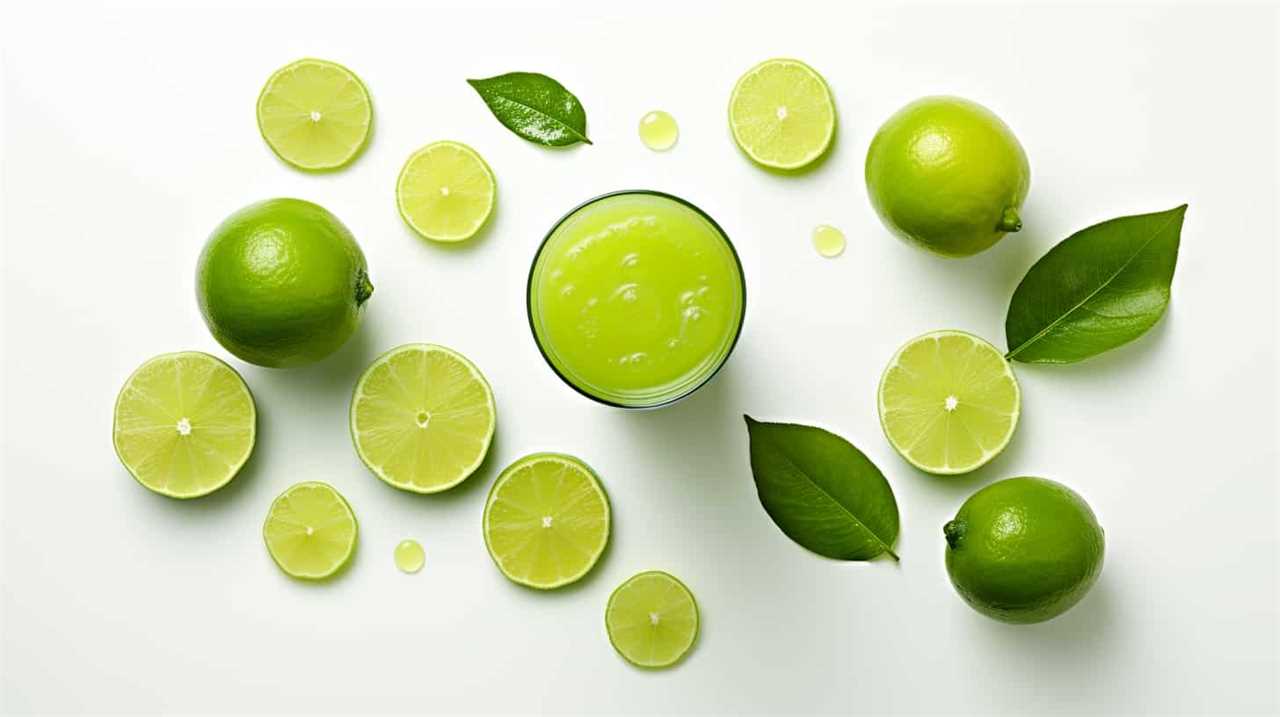
Key Takeaways
- Choose a reputable brand of aloe vera juice that prioritizes quality and uses organic, pure aloe vera.
- Avoid brands that contain added sugars or artificial ingredients.
- Use natural sweeteners like honey, agave syrup, or stevia to enhance the taste of aloe vera juice.
- Experiment with adding fruits, herbs, and other juices to create unique flavor combinations and enhance the health benefits of aloe vera juice.
Choosing the Right Aloe Vera Juice
We can enhance our experience with aloe vera juice by selecting the right brand and type for our preferences. When it comes to finding a reputable brand, it’s important to do some research and read reviews from other consumers. Look for brands that prioritize quality and use organic, pure aloe vera without any added sugars or artificial ingredients. Understanding the health benefits of aloe vera juice is also crucial in making the right choice. Aloe vera is known for its soothing properties, aiding digestion, promoting skin health, and boosting the immune system. By choosing a high-quality brand, we can ensure that we’re getting the maximum benefits from our aloe vera juice.
Now that we know how to choose the right brand, let’s move on to the next step of adding natural sweeteners.
Adding Natural Sweeteners
To enhance the flavor of our aloe vera juice, we can add natural sweeteners such as honey or agave syrup. Using alternative sweeteners not only adds sweetness but also brings unique flavors to the juice. Here are some options to consider:
- Stevia: A natural sweetener derived from the Stevia plant, it’s a zero-calorie alternative to sugar.
- Maple Syrup: This natural sweetener adds a rich and earthy flavor to the aloe vera juice.
- Dates: Pureed dates can be used to sweeten the juice while also providing essential nutrients like fiber.
In addition to using alternative sweeteners, we can enhance the flavor of aloe vera juice by adding spices and extracts. Cinnamon, ginger, or vanilla extract can add warmth and depth to the taste. By experimenting with different combinations of these natural sweeteners, spices, and extracts, we can create a flavor profile that suits our preferences.
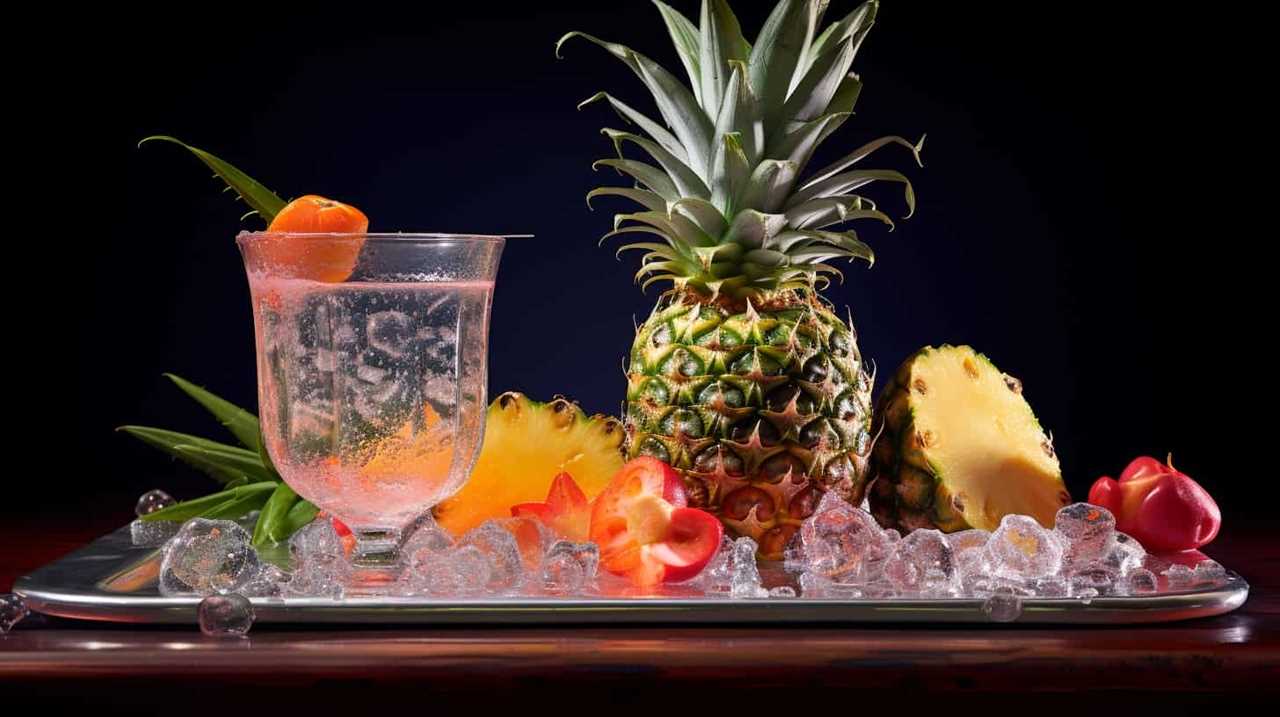
Now, let’s move on to the next section and learn how to infuse aloe vera juice with fruits and herbs to further enhance its taste.
Infusing With Fruits and Herbs
As we explore ways to make our aloe vera juice taste better, one option to consider is infusing it with fruits and herbs. Creating unique aloe vera blends by adding fruits and herbs not only enhances the flavor but also adds a touch of freshness and complexity to the juice. For example, combining aloe vera juice with lemon, mint, or berries can create a refreshing drink that’s both delicious and packed with additional nutrients. It’s similar to the ease of making lemonade with bottled juice—quick, convenient, and customizable to suit your preferences. By experimenting with different fruit and herb combinations, you can elevate your aloe vera juice experience while still reaping its health benefits.
Fruits like strawberries, pineapple, or citrus can add a burst of sweetness, while herbs like mint, basil, or ginger can provide a subtle yet refreshing twist. Exploring the benefits of herbal infusions can also be beneficial for our health. For example, adding a few sprigs of lavender can promote relaxation and reduce stress. Additionally, infusing aloe vera juice with rosemary can aid digestion and boost the immune system.
Blending With Other Juices
Let’s try mixing aloe vera juice with different fruit juices to create delicious and refreshing blends. Blending aloe vera juice with other fruits not only enhances its taste but also adds nutritional benefits to your drink. Here are three fruit juices that you can mix with aloe vera juice:

- Orange juice: Combining aloe vera juice with orange juice not only adds a tangy flavor but also boosts your intake of vitamin C, which is essential for a strong immune system.
- Pineapple juice: Mixing aloe vera juice with pineapple juice creates a tropical blend that isn’t only refreshing but also helps in digestion. Pineapple contains bromelain, an enzyme that aids in breaking down proteins and promoting better digestion.
- Watermelon juice: Blending aloe vera juice with watermelon juice creates a hydrating and refreshing combination. Watermelon is rich in water content and contains electrolytes that can help replenish your body’s fluids.
Experimenting With Flavor Combinations
While we can try various flavor combinations with aloe vera juice, it’s important to find the right balance to enhance its taste. Experimenting with different flavors can’t only make the juice more enjoyable but also enhance its health benefits.
Aloe vera juice is known for its numerous health benefits, such as boosting digestion, promoting hydration, and supporting the immune system. By adding complementary flavors, we can create a refreshing summer drink that not only tastes great but also provides a nutritional boost.
Some popular flavor combinations include mixing aloe vera juice with citrus fruits like lemon or orange, adding a splash of coconut water for a tropical twist, or combining it with cucumber and mint for a refreshing and cooling effect.
Don’t be afraid to get creative and find the flavor combination that suits your taste buds best!
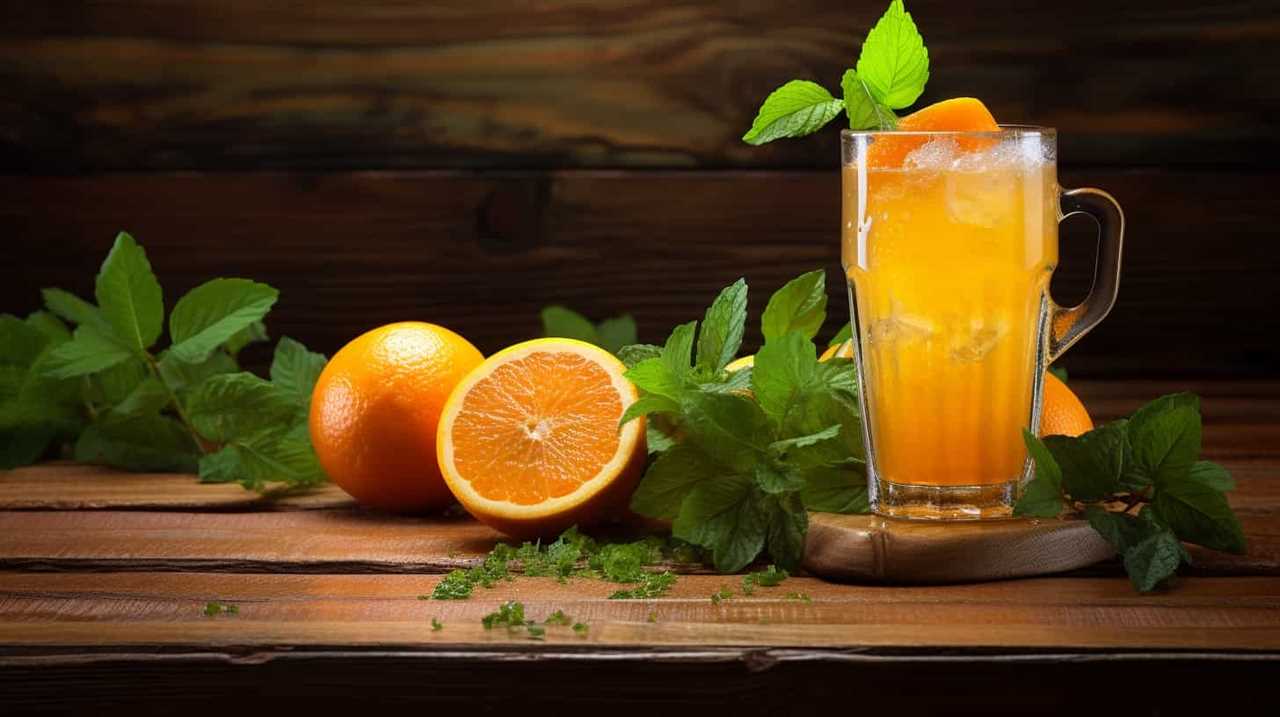
Frequently Asked Questions
Can I Use Store-Bought Aloe Vera Gel Instead of Fresh Aloe Vera for Making Juice?
Yes, you can use store-bought aloe vera gel instead of fresh aloe vera for making juice. However, it’s important to note that fresh aloe vera juice may have more health benefits due to its higher nutrient content.
How Long Can I Store Aloe Vera Juice in the Refrigerator?
Aloe vera juice can be stored in the refrigerator for up to a week. Refrigeration helps maintain the longevity and freshness of the juice, preserving its beneficial properties. It’s important to store the juice in an airtight container to prevent contamination and maintain its quality. Similarly, you might wonder *how long ginger juice lasts*; typically, fresh ginger juice can be refrigerated for about 1–2 weeks as well. Both aloe vera and ginger juices are best consumed within their shelf life to ensure maximum potency and health benefits. Additionally, freezing either juice can extend their shelf life, though some loss of nutrients and potency may occur during the process. When thinking about *how long fresh juice lasts*, it’s crucial to check for signs of spoilage, such as changes in smell, taste, or color, before consuming. To enjoy the best results, it’s always recommended to use fresh ingredients and properly store the juice to ensure you’re getting the most out of its health benefits.
Can Aloe Vera Juice Help With Digestive Issues?
Aloe vera juice can potentially help with digestive issues when taken in appropriate dosages. However, it is important to note that there may be potential side effects. It is always best to consult with a healthcare professional before starting any new supplement regimen.
Can I Use Artificial Sweeteners Instead of Natural Sweeteners in My Aloe Vera Juice?
Using artificial sweeteners in aloe vera juice may affect its taste and potential health benefits. However, natural sweeteners like honey or stevia can enhance the flavor without compromising its nutritional value.

Is It Safe to Drink Aloe Vera Juice Every Day?
Drinking aloe vera juice daily can have numerous benefits, such as improving digestion and boosting the immune system. However, consuming it regularly may also lead to potential side effects like diarrhea or stomach cramps.
Conclusion
In conclusion, making aloe vera juice taste better is easy and enjoyable.
By choosing the right aloe vera juice and adding natural sweeteners, infusing with fruits and herbs, blending with other juices, and experimenting with flavor combinations, you can create a delightful and refreshing drink.
So go ahead and unleash your creativity in the kitchen, and transform your aloe vera juice into a sensational elixir that will transport your taste buds to paradise.
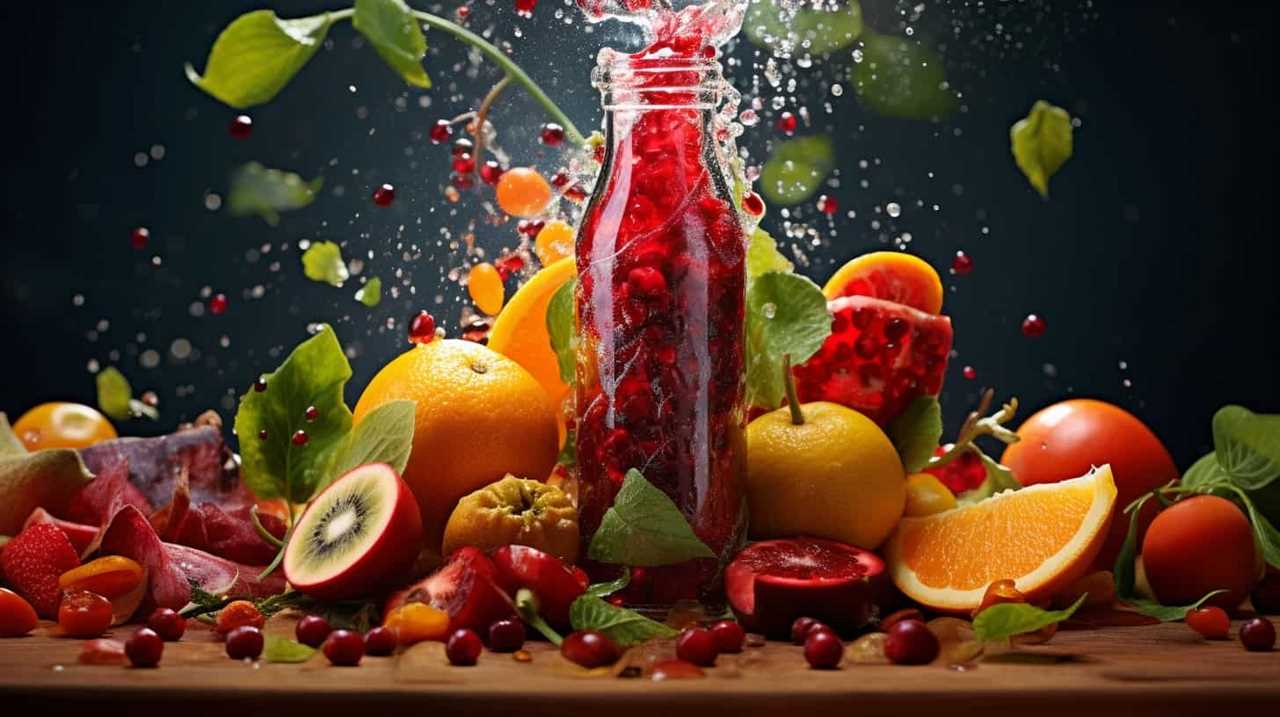
Susannah expertise lies in researching and compiling evidence-based content on juicing, nutrition, and overall health. She is committed to ensuring that The Juicery World offers accurate, up-to-date, and trustworthy information to empower readers to take control of their health. Susannah’s goal is to inspire individuals to embrace juicing as a way to nourish their bodies and live their best lives.
Juice Tips and Tricks
How to Make a Glass of Lemonade With Bottled Lemon Juice

Are you craving a cool glass of lemonade to quench your thirst? Look no further! Try out our perfect recipe using bottled lemon juice that will surely please your taste buds.
In this article, we’ll guide you through the process of creating a tangy and sweet concoction that will leave you feeling refreshed and satisfied.
So grab your ingredients and let’s get started on this delightful journey of serving ourselves and others a glass of pure lemony goodness.
Key Takeaways
- Consider the storage of the bottled lemon juice (dark glass or plastic bottles, protect from light exposure, check expiration date)
- Choose a suitable pitcher and fresh lemons for enhanced flavor
- Store the lemonade concentrate in the refrigerator to maintain freshness
- Adjust the sweetness and tartness to taste with sugar or more lemon juice, and experiment with different sweeteners or additional flavors.
Choosing the Right Bottled Lemon Juice
What are the key factors we should consider when selecting the right bottled lemon juice for our lemonade?

One important factor is how the lemon juice is stored. Look for bottles that are made of dark glass or plastic, as they help protect the juice from light exposure, which can degrade its quality. It’s also important to check the expiration date to ensure freshness.
Another benefit of using bottled lemon juice is convenience. It saves time and effort compared to squeezing fresh lemons. Additionally, bottled lemon juice provides consistent flavor, as the acidity levels are standardized.
When selecting a brand, consider reading reviews and checking for certifications, such as organic or non-GMO.
Gathering the Necessary Ingredients and Tools
How can we gather all the necessary ingredients and tools to make a glass of lemonade with bottled lemon juice? First, we’ll need to collect bottled lemon juice, sugar, and cold water, as well as a pitcher and a spoon for mixing. If you prefer extra flavor, you can also gather ice and optional add-ins like mint or soda water. While preparing the lemonade, it’s easy to understand why some people wonder about other citrus drinks and may ask, “how many oranges per gallon” are needed when making orange juice instead. Once everything is assembled, combine the lemon juice, sugar, and water in the pitcher, stirring until the sugar dissolves. Feel free to adjust the sweetness or tartness to your liking, and don’t forget to add ice or any optional add-ins for an extra refreshing touch. This process might even make you curious about how much juice from oranges is needed when making fresh orange juice compared to using bottled citrus products. Once your lemonade is ready, pour it into a glass and enjoy the refreshing taste. This simple recipe can inspire you to try other homemade juices, such as learning **how to make pear juice** or experimenting with other fruit combinations. Whether you’re using fresh fruits or bottled options, creating your own beverages is a fun and rewarding way to personalize your drinks.
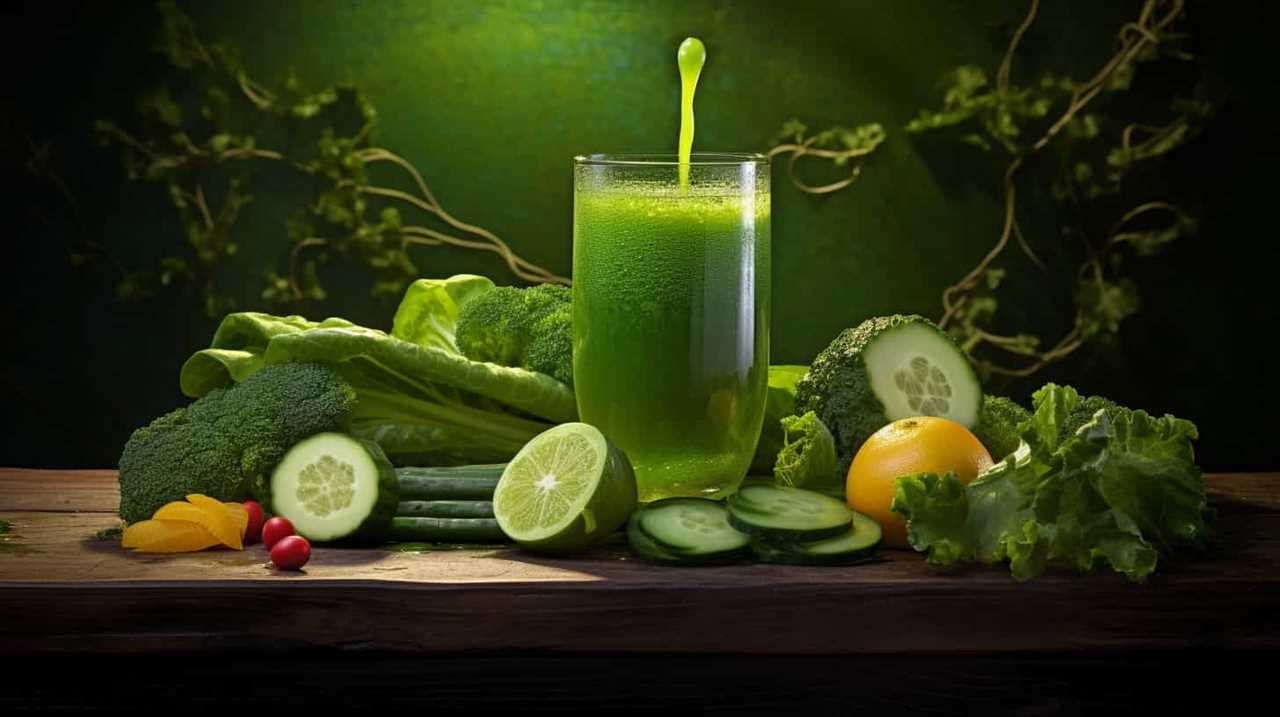
It’s important to start with the right pitcher. Look for a pitcher that’s made of glass or BPA-free plastic, as these materials won’t affect the taste of the lemonade. The pitcher should also have a lid or cover to keep the lemonade fresh and prevent spills.
Now, let’s talk about the lemons. While bottled lemon juice is convenient, using fresh lemons instead can elevate the flavor of your lemonade. Choose lemons that are firm and have a bright yellow color. Give them a gentle squeeze to ensure they’re juicy. To extract the juice, you’ll need a citrus juicer or a reamer. These tools make it easy to get every last drop of juice from the lemons.
Mixing the Lemonade Concentrate
To start mixing the lemonade concentrate, we’ll slowly pour the bottled lemon juice into the pitcher. It’s important to choose the right container for the lemonade concentrate. A pitcher with a lid or a tightly sealed container will help maintain the freshness and prevent any spills or leaks. Once the lemon juice is in the pitcher, we can move on to the next step of adding water and sweetener.
To ensure the lemonade concentrate stays fresh, it’s essential to store it properly. Keep the pitcher in the refrigerator to maintain its cool temperature and prevent any bacteria growth. If you have any leftover concentrate, transfer it to a smaller container with an airtight lid before refrigerating. This will help retain its flavor and prevent any contamination.

Now that we’ve mixed the lemonade concentrate, it’s time to adjust the sweetness and tartness to taste.
Adjusting the Sweetness and Tartness to Taste
We can adjust the sweetness and tartness of the lemonade to taste by adding more sugar or lemon juice, respectively. If you prefer a sweeter lemonade, simply add more sugar and stir until it dissolves completely. You can experiment with different sweeteners such as honey or agave syrup to find the perfect balance of sweetness.
On the other hand, if you want a tangier lemonade, add more lemon juice gradually, tasting as you go until it reaches your desired level of tartness.
Additionally, you can get creative with your lemonade by adding flavors like fresh mint leaves or a hint of lavender. These additions can elevate the flavor profile and create a more refreshing and unique experience.

Now that we’ve adjusted the sweetness and tartness of our lemonade, let’s move on to serving and enjoying your refreshing glass of lemonade.
Serving and Enjoying Your Refreshing Glass of Lemonade
Now let’s sit back, relax, and savor our refreshing glass of lemonade.
When it comes to serving and enjoying this delightful drink, there are a few techniques and garnishing options to consider.
Firstly, serving your lemonade chilled is essential for maximum enjoyment. Ensure that you have chilled glasses or add ice cubes to the glasses before pouring the lemonade.

To add a touch of elegance, you can garnish your lemonade with a slice of lemon on the rim of the glass. For an extra burst of flavor, you could also add a sprig of fresh mint or a few berries.
Remember to gently stir the lemonade before serving to evenly distribute the flavors.
Now, take a sip, feel the refreshing tang of lemon, and let the sweet and tart flavors dance on your taste buds.
Cheers!

Frequently Asked Questions
Can I Use Fresh Lemons Instead of Bottled Lemon Juice?
Fresh lemons offer numerous benefits over bottled lemon juice. The taste of fresh lemons is unparalleled, providing a vibrant and tangy flavor. Incorporating fresh lemons into your lemonade will elevate its taste and give it a refreshing and authentic twist.
Can I Substitute Sugar With a Different Sweetener?
Substituting sweeteners in lemonade can enhance the flavor and offer health benefits. We’re knowledgeable about alternative sweeteners and can provide precise, detailed instructions on using them in place of sugar.
How Long Does the Lemonade Concentrate Need to Chill in the Refrigerator?
The chilling time for the lemonade concentrate in the refrigerator is typically around 1-2 hours. Using bottled lemon juice offers the benefit of convenience and consistent flavor for a refreshing glass of lemonade.
Can I Add Other Fruits or Flavors to the Lemonade?
Sure, we can definitely add different fruits or flavors to our lemonade. It’s a great way to experiment with unique flavors and create refreshing, personalized drinks. The possibilities are endless!

How Long Does the Lemonade Stay Fresh in the Refrigerator?
Lemonade made with bottled lemon juice can stay fresh in the refrigerator for about 5-7 days. To maximize shelf life, store it in an airtight container and keep it chilled.
Conclusion
And so, with a few simple steps and the right ingredients, a glass of refreshing lemonade is born.
Like a symphony of flavors dancing on your taste buds, this tangy elixir quenches thirst and brings joy on a hot summer day.
Just a sip transports you to a world of citrusy delight, where the sweetness and tartness blend harmoniously.

So go ahead, indulge in the art of lemonade-making and savor every drop of this sun-kissed nectar.
Cheers to the perfect glass of lemonade!
Susannah expertise lies in researching and compiling evidence-based content on juicing, nutrition, and overall health. She is committed to ensuring that The Juicery World offers accurate, up-to-date, and trustworthy information to empower readers to take control of their health. Susannah’s goal is to inspire individuals to embrace juicing as a way to nourish their bodies and live their best lives.
Juice Tips and Tricks
How to Know if Orange Juice Is Bad

We’ve all been in that situation before – reaching for a glass of orange juice and hesitating, unsure if it’s still okay to drink. Fear not! This article will give you the knowledge you need to determine for sure if your orange juice is still fresh or if it’s gone bad.
With a blend of scientific precision and practical tips, we’ll explore color changes, strange smells, off taste, texture changes, and mold or growth that may indicate spoilage.
Let’s dive in and serve ourselves a refreshing glass of certainty!
Key Takeaways
- Color changes in orange juice can indicate a loss of freshness and shelf life extension, but it doesn’t necessarily mean the juice is bad.
- Unusual or off-putting odors in orange juice, such as sour or fermented scents, can be a sign of poor quality.
- An off taste in orange juice, such as sour, bitter, or fermented flavors, suggests that the juice is spoiled.
- Texture changes in orange juice, such as pulp separation or a thicker consistency, can occur as the juice ages, so it’s important to consume it before the expiration date.
Color Changes in Orange Juice
We should be aware that color changes can indicate whether orange juice is bad.

When it comes to orange juice, color is a crucial factor to consider. As oranges are exposed to air, an oxidation process occurs, which leads to changes in color. Fresh orange juice has a vibrant orange hue, indicating its freshness and high nutritional value.
However, as time passes, the juice may undergo a color change, turning dull or brownish. This change in color is a result of the oxidation process, which affects the flavor and quality of the juice. It’s important to note that while a change in color doesn’t necessarily mean the juice is bad, it does indicate that the juice is losing its freshness and shelf life extension.
Therefore, it’s advisable to consume orange juice when it’s at its freshest, as indicated by its vibrant orange color.
Strange Smells in Orange Juice
When it comes to evaluating orange juice, we should be cautious of any strange smells or odors. A fresh, pleasant smell is indicative of good quality orange juice. However, if you notice any unusual or off-putting odors, it may be a sign that the juice has gone bad. These smells can range from a sour or fermented scent to a rancid or moldy aroma.

It’s important to note that while some natural variations in scent can occur due to the specific variety of oranges used, any strong or unpleasant smells should raise concerns. If you have citrus fruit allergies, it’s especially important to pay attention to the smell of orange juice, as it could indicate the presence of spoilage or contamination.
Ensuring the quality of orange juice is essential as it’s a popular beverage known for its health benefits, including being rich in vitamin C and antioxidants.
Off Taste of Orange Juice
Our taste buds can detect even the slightest hint of an off taste in orange juice, which can indicate that it has gone bad. The taste of orange juice should be fresh, tangy, and slightly sweet. If it tastes sour, bitter, or fermented, it’s likely spoiled.
One common cause of an off taste in orange juice is the use of overripe oranges. When oranges become overripe, their flavor profile changes, resulting in a less pleasant taste. Another factor to consider is the expiration date. Orange juice that has passed its expiration date is more likely to develop an off taste. It’s important to check the expiration date before consuming orange juice to ensure its freshness and quality. Additionally, improper storage conditions, such as leaving the juice at room temperature for extended periods, can lead to the development of unpleasant flavors. Storing orange juice in the refrigerator helps maintain its freshness for longer. For those exploring different juice options, aloe vera juice flavor tips suggest pairing tart juices with milder flavors to balance the overall taste.
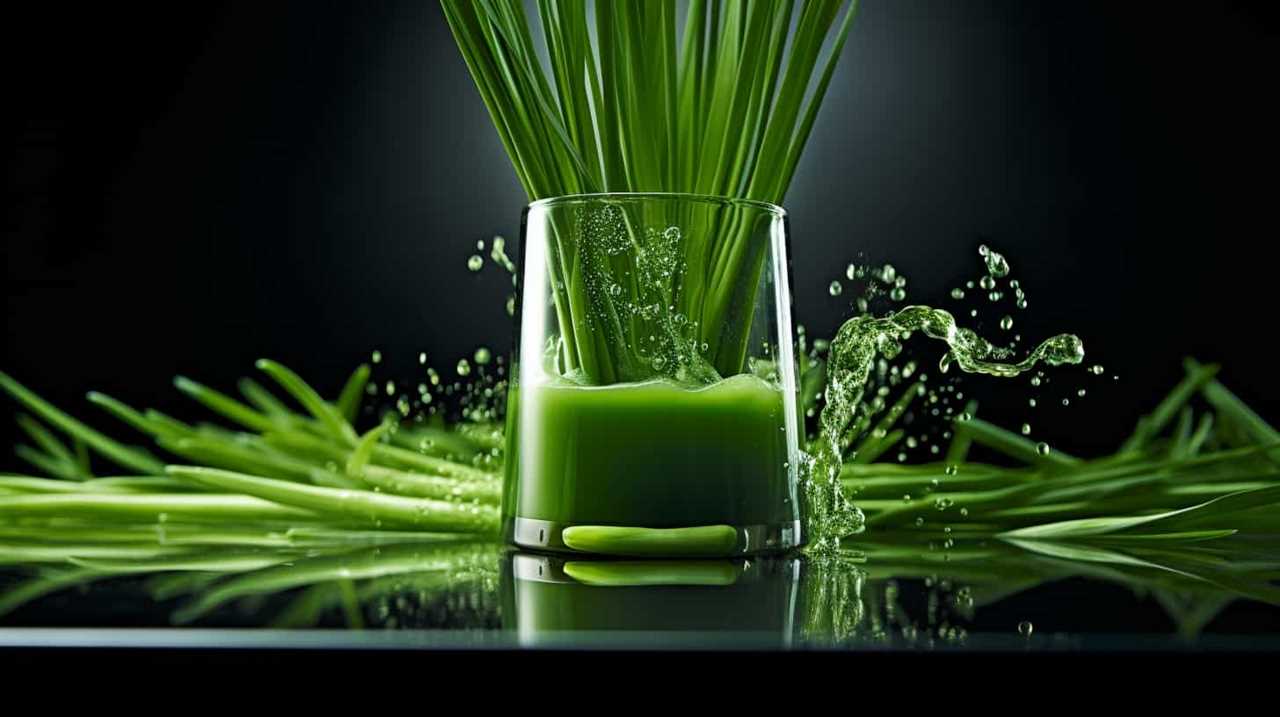
Now, let’s move on to discuss the texture changes in orange juice.
Texture Changes in Orange Juice
As we explore the texture changes in orange juice, it’s important to note that certain factors can cause it to become thicker or develop sediment. One common texture change in orange juice is pulp separation, where the pulp separates from the liquid and settles at the bottom. This can occur naturally over time, as the pulp particles become denser and sink.
Another factor that can affect the texture of orange juice is the expiration date. As orange juice ages, it may start to develop a thicker consistency and even form sediment. This is a result of the natural breakdown of the juice’s components. Therefore, it’s crucial to check the expiration date on orange juice and consume it before it reaches its expiration date to avoid any undesirable texture changes.
Mold or Growth in Orange Juice
We need to be aware of the possibility of mold or other growth occurring in orange juice. Mold can develop in orange juice if it isn’t stored properly or if it has passed its expiration date.

To prevent mold growth, it’s important to follow these steps:
- Store orange juice in the refrigerator at a temperature below 40°F (4°C).
- Check the expiration date on the bottle before consuming. Discard any orange juice that has expired.
- Keep the container tightly sealed to prevent air and moisture from entering, as these can promote mold growth.
Regularly inspecting orange juice for any signs of mold or unusual growth is essential. If you notice any discoloration, a strange odor, or visible mold, it’s best to discard the juice to avoid any potential health risks.
Frequently Asked Questions
Can Orange Juice Go Bad if It’s Stored in the Freezer for Too Long?
Frozen orange juice can potentially lose its nutrients and change its taste if stored in the freezer for too long. It is important to check for signs of spoilage before consuming it.
How Long Can Orange Juice Stay Fresh in the Refrigerator Once It’s Opened?
Once opened, orange juice can stay fresh in the refrigerator for about 7-10 days. To maintain its freshness, store it properly by keeping it tightly sealed and at a consistently cold temperature. If the orange juice develops an off odor, flavor, or appearance, it’s best to discard it to avoid any potential health risks. Factors like exposure to air and varying temperatures can influence how long orange juice lasts, so it’s crucial to handle it with care. Always check the expiration date as a general guide, but remember that proper storage can extend its freshness slightly. Additionally, avoid leaving the orange juice out at room temperature for extended periods, as this can significantly shorten how long orange juice lasts. Freezing the juice can be another option to extend its shelf life, but be aware that this may alter its texture and taste once thawed. By following these precautions, you can ensure your orange juice stays fresh and safe to consume.
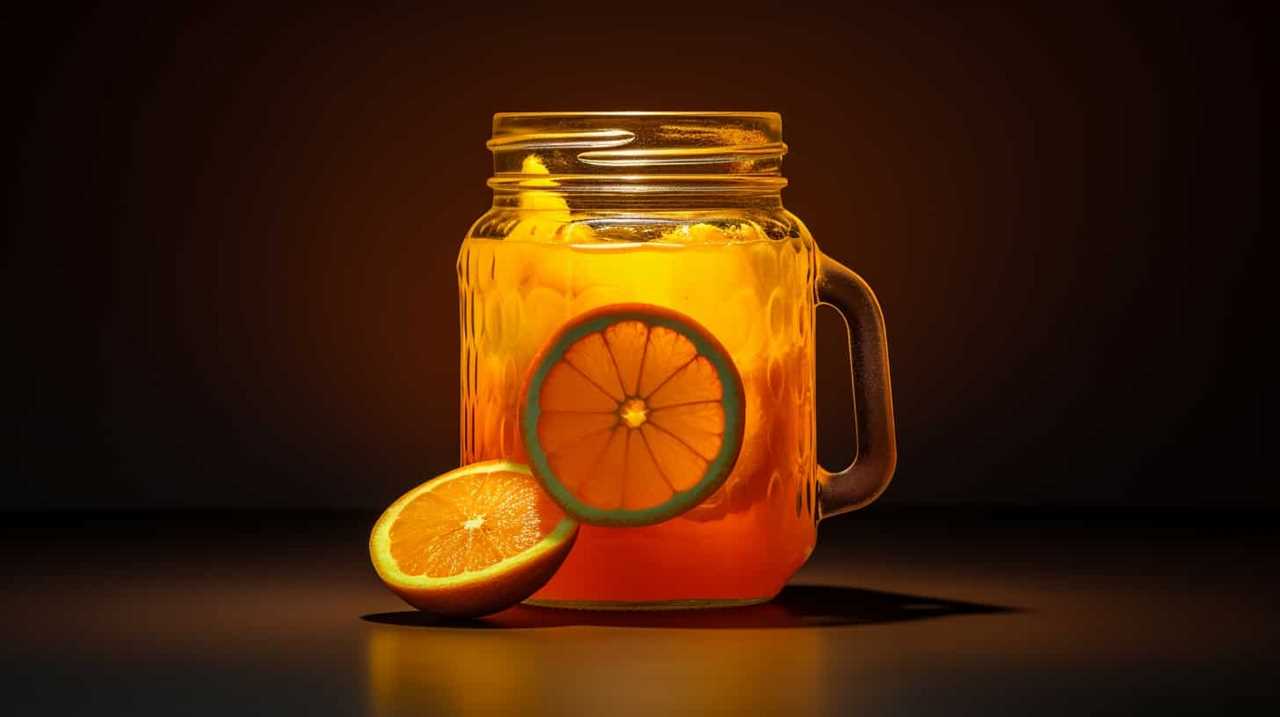
Is It Safe to Consume Orange Juice That Has Been Left Out at Room Temperature Overnight?
Left out orange juice may not be safe to drink as it can harbor harmful bacteria. Signs of spoiled orange juice include a sour smell, mold growth, and a change in color or taste.
Can Orange Juice Develop Harmful Bacteria if It’s Past Its Expiration Date but Still Looks and Smells Fine?
Orange juice can cause food poisoning if it develops harmful bacteria, even if it looks and smells fine. Signs of spoiled orange juice include a sour smell, mold growth, and a change in color or taste.
Does the Nutritional Value of Orange Juice Decrease as It Starts to Go Bad?
As orange juice goes bad, its nutritional value decreases. The longer it sits on the shelf, the more nutrients it loses. Signs of spoilage include a sour smell, off taste, and mold growth.
Conclusion
In conclusion, determining if orange juice is bad requires careful observation of color changes, strange smells, off taste, and texture changes. Just like a detective investigating a case, we must rely on our senses to detect any signs of spoilage.
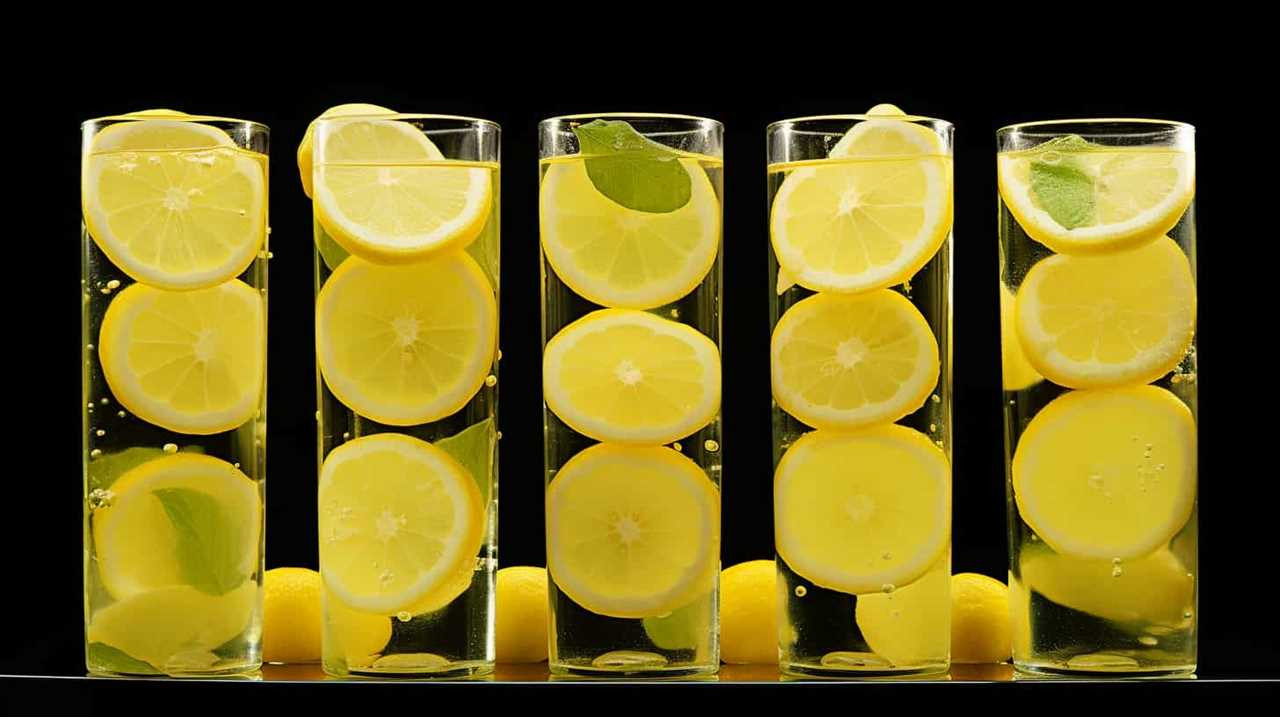
If we detect mold or growth in the orange juice, it’s a clear indication that it’s no longer safe to consume. By remaining vigilant and attuned to these indicators, we can ensure that our orange juice is always fresh and enjoyable.
Susannah expertise lies in researching and compiling evidence-based content on juicing, nutrition, and overall health. She is committed to ensuring that The Juicery World offers accurate, up-to-date, and trustworthy information to empower readers to take control of their health. Susannah’s goal is to inspire individuals to embrace juicing as a way to nourish their bodies and live their best lives.
-

 Vetted2 months ago
Vetted2 months ago15 Best Juices for Diabetics: Refreshing Options That Won’t Spike Your Blood Sugar
-

 Vetted2 months ago
Vetted2 months ago15 Best Decaf Coffee Options for Flavor Lovers Who Need a Caffeine Break
-

 Vetted2 months ago
Vetted2 months ago15 Best Espresso Ground Coffees to Elevate Your Morning Brew
-

 Vetted2 months ago
Vetted2 months ago15 Best K-Cup Coffee Pods for a Perfect Brew Every Time
-

 Vetted2 months ago
Vetted2 months ago15 Best Beans for Espresso: A Guide to Perfecting Your Brew
-

 Vetted2 months ago
Vetted2 months ago15 Best Inexpensive Espresso Machines That Brew Quality Coffee on a Budget
-

 Vetted2 months ago
Vetted2 months ago15 Best Kona Coffees to Savor the Rich Flavors of Hawaii
-

 Vetted2 months ago
Vetted2 months ago15 Best Cold Brew Coffees to Keep You Refreshed All Summer Long




